The baseball catcher’s mask is a design that is constantly evolving. Safety is the number one reason for any modifications, and though I’m no expert, I expect that when it comes to redesigning the mask, improved visibility probably ranks a close second, with the ability to quickly remove the mask a probable third.
According to lore, a Harvard baseball manager named Fredrick W. Thayer developed the first mask in 1878. As pitchers developed stronger throwing arms, more sophisticated throws, and improved curve and fastballs, catchers were increasingly at risk of getting hit in the face by pitches they could not follow (especially after a rule change that moved catchers even closer to the plate behind the batter). Here was an invention born purely from the need to protect the player. Fans hated it. They claimed it detracted from the game, was an unnecessary safety measure, and just plain looked weird. One sportswriter wrote: "There is a good deal of beastly humbug in contrivances to protect men from things that don’t happen. There is about as much sense in putting a lightning rod on a catcher as a mask."

The 1877 Harvard baseball team
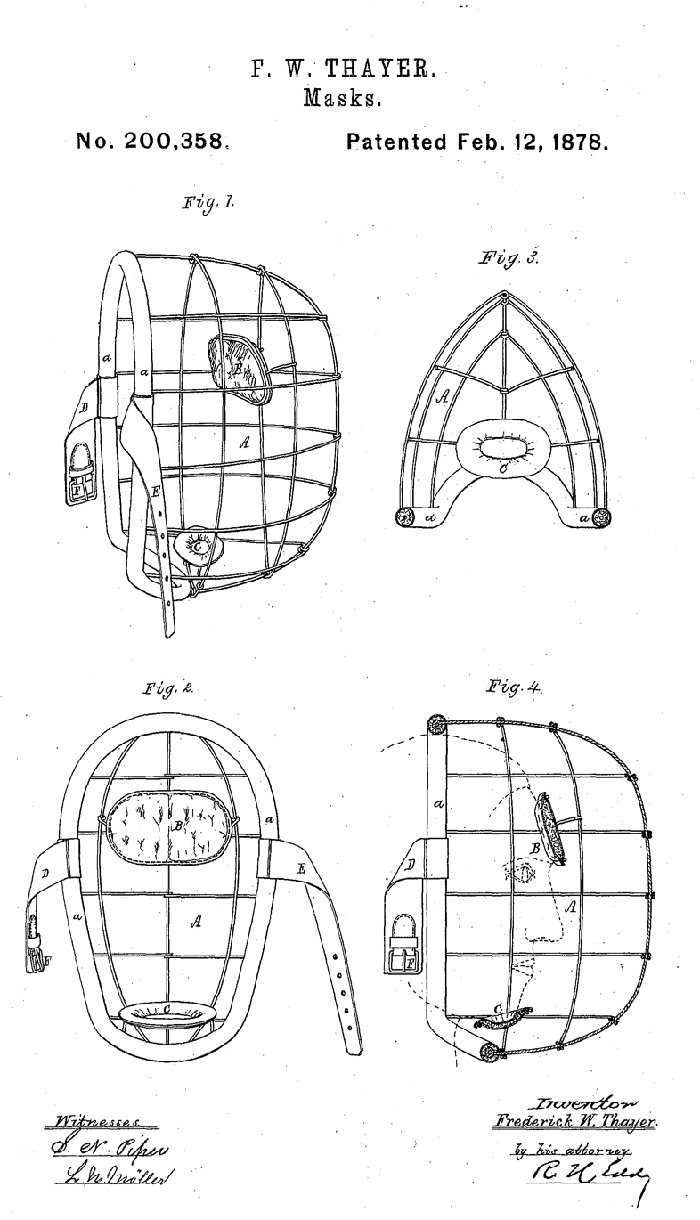
The first patented catcher's mask by F. W. Thayer, February 12, 1878
However, the development met with favor from the Harvard Crimson, when they wrote:
The new mask was proved a complete success, since it entirely protects the face and head and adds greatly to the confidence of the catcher, who need not feel that he is every moment in danger of a life-long injury. To the ingenious inventor of this mask we are largely indebted for the excellent playing of our new catcher, who promises to excel the fine playing of those who have previously held this position.
However, the development met with favor from the Harvard Crimson, when they wrote:
The new mask was proved a complete success, since it entirely protects the face and head and adds greatly to the confidence of the catcher, who need not feel that he is every moment in danger of a life-long injury. To the ingenious inventor of this mask we are largely indebted for the excellent playing of our new catcher, who promises to excel the fine playing of those who have previously held this position.
For me, I am attracted to vintage catcher’s masks simply for the varied designs and their medieval looks. Though I am a baseball fan, and I have had quite a few examples in my collection, my love of masks really has little to do with the sport. The early masks were made with heavy iron or steel cages and padding, and set the catcher apart from every other player on the team.
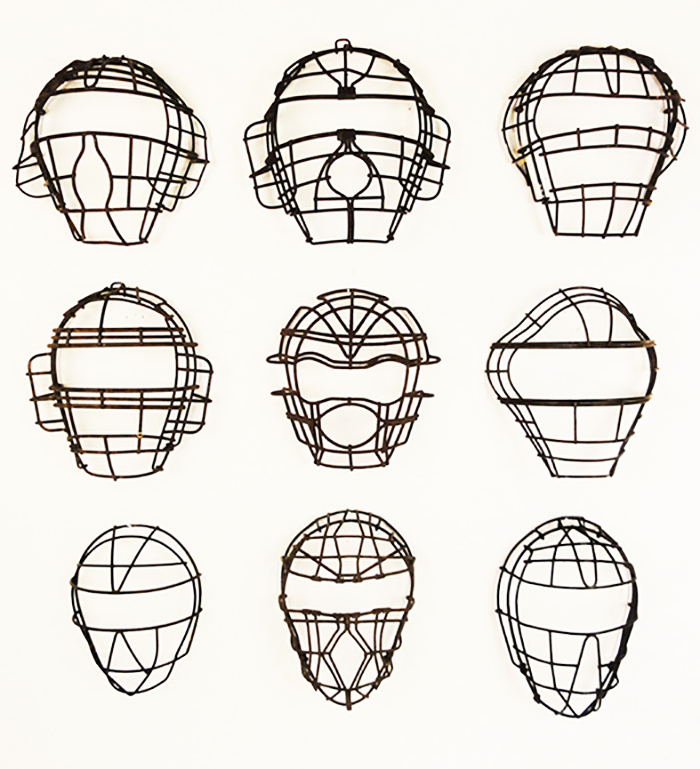
While some catcher’s masks still retain a look similar to ones from long ago (as the one Erik Kratz of the Kansas City Royals is sporting these days), the newest full head, hockey-style masks some catchers choose to use today are growing in popularity, including with Buster Poesy, of the San Francisco Giants (and if you were wondering who the first MLB player was to wear one of these, it was Charlie O’Brien, in 1997, while he was with the Toronto Blue Jays).
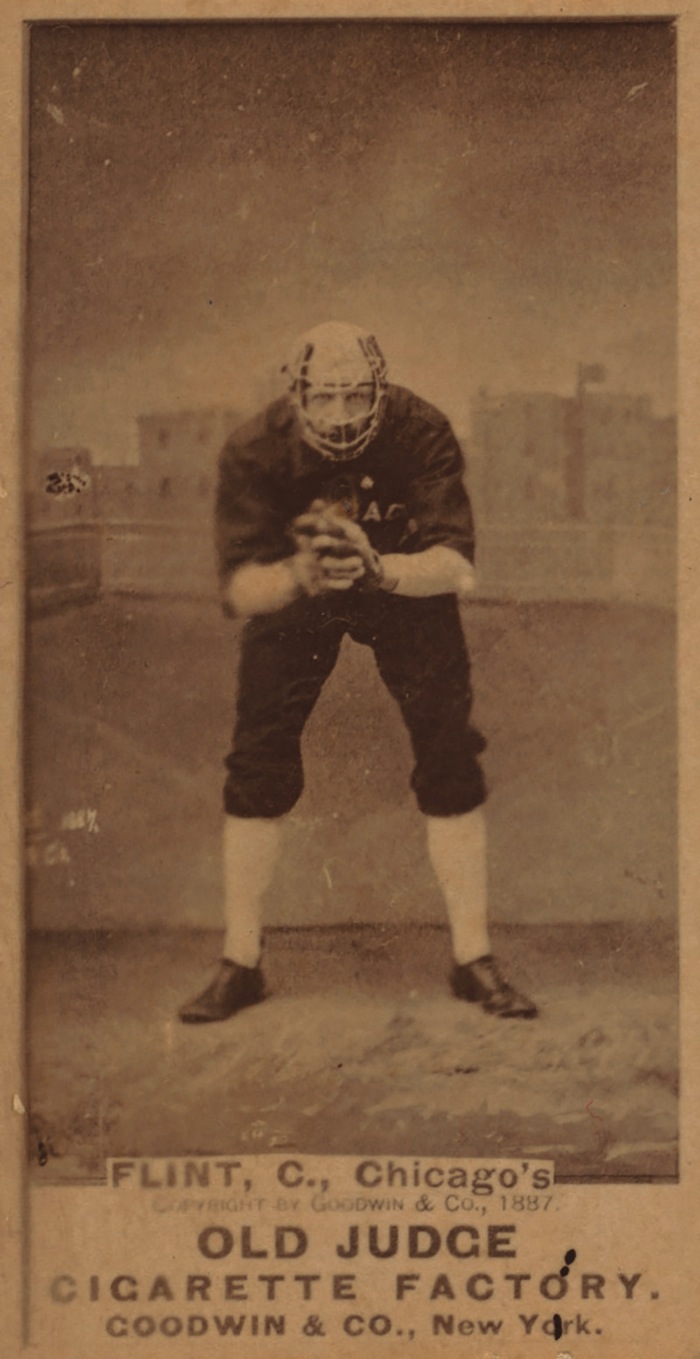
Baseball card featuring Silver Flint
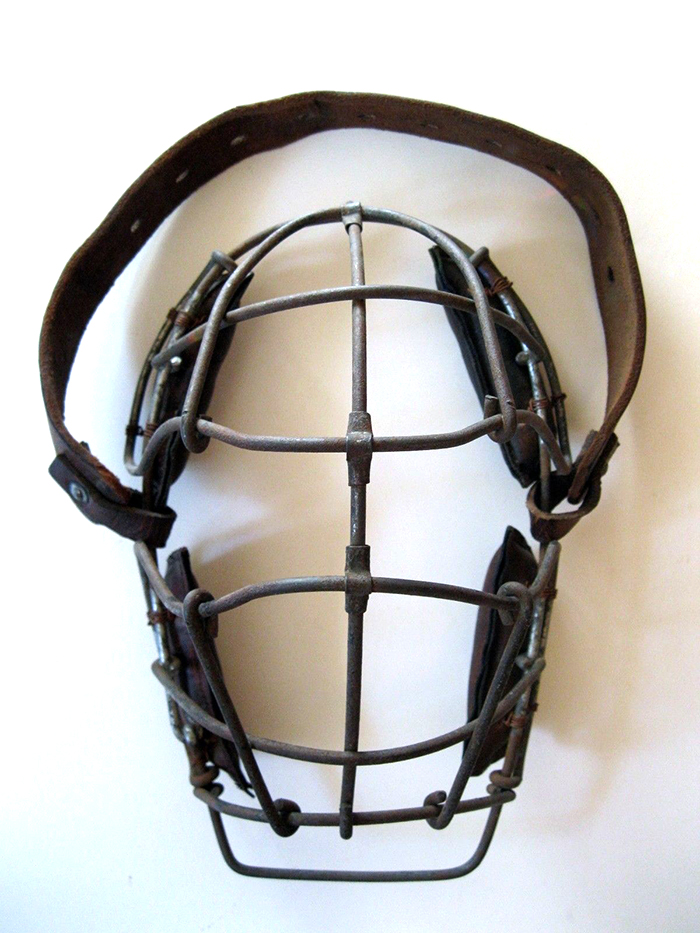
A mask from the 1890s
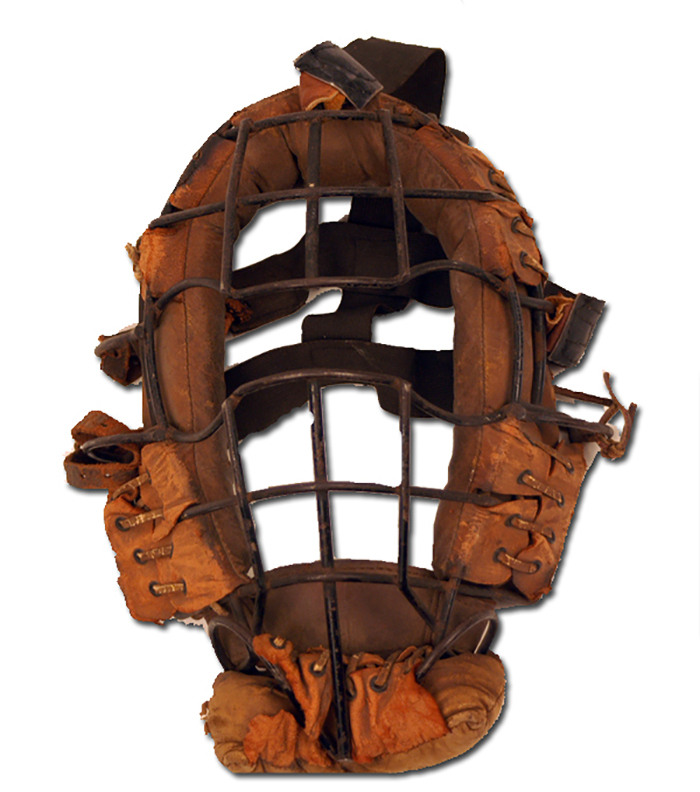
An 1890s-era elongated cage spiderman catcher's mask
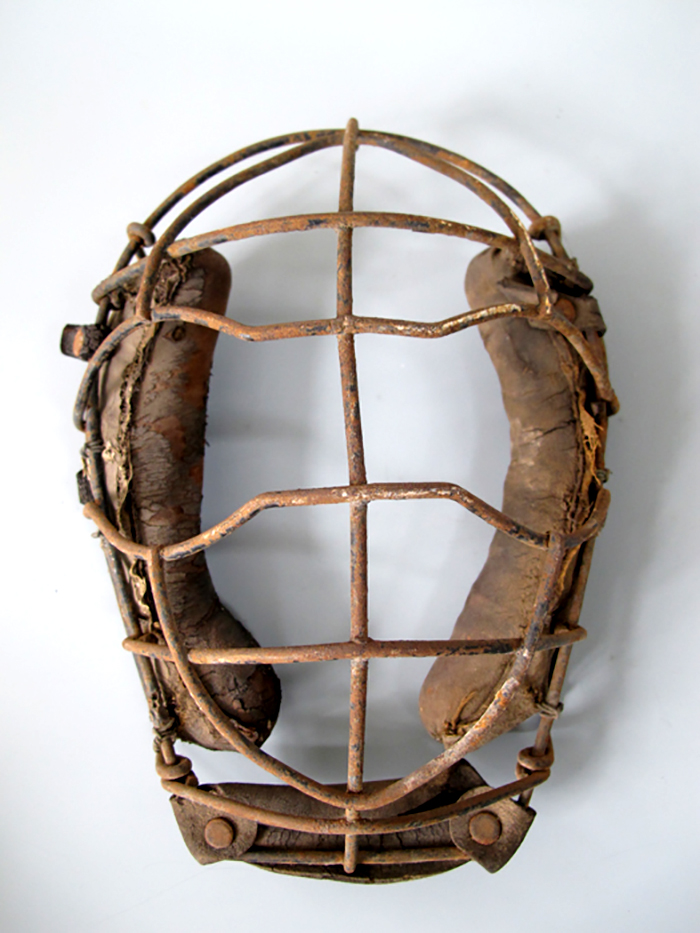
Spiderman mask, 1905 | Image courtesy of American Primitive Gallery, NY
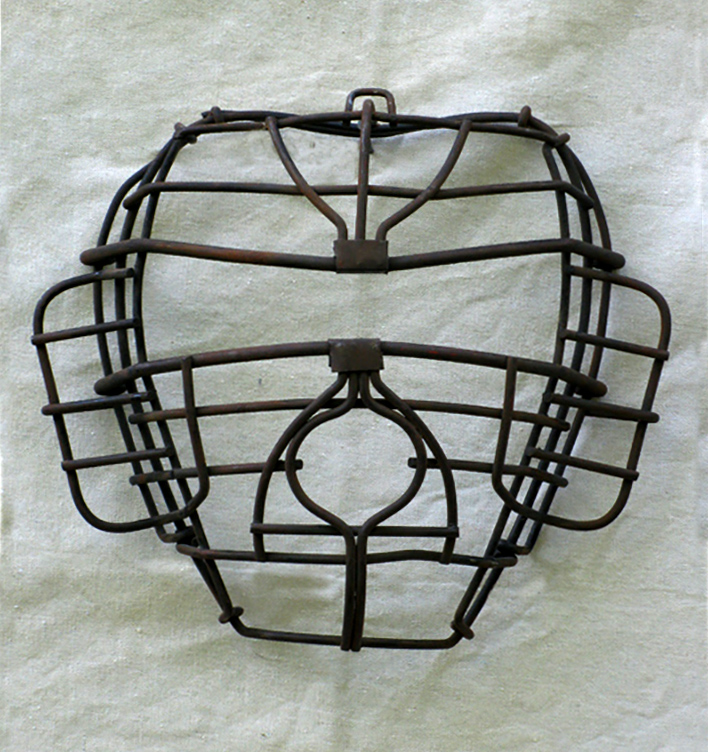
A spitter style mask, 1930s | Image courtesy of American Primitive Gallery, NY
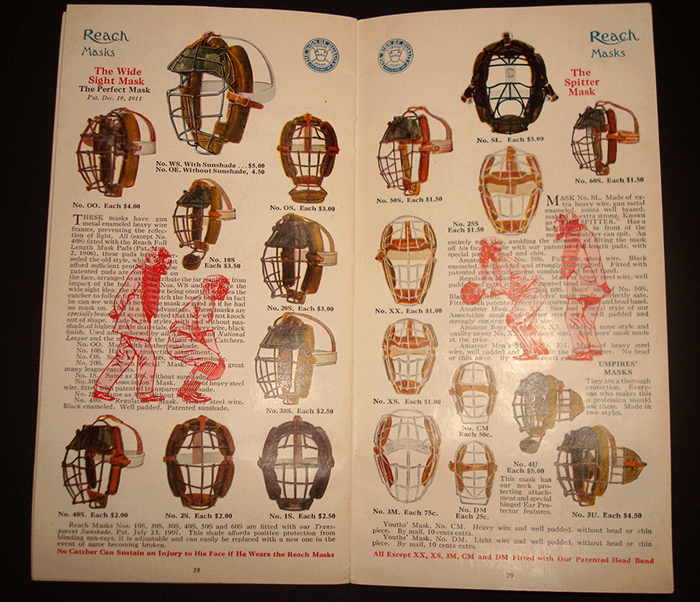
A. J. Reach baseball equipment catalog, 1914
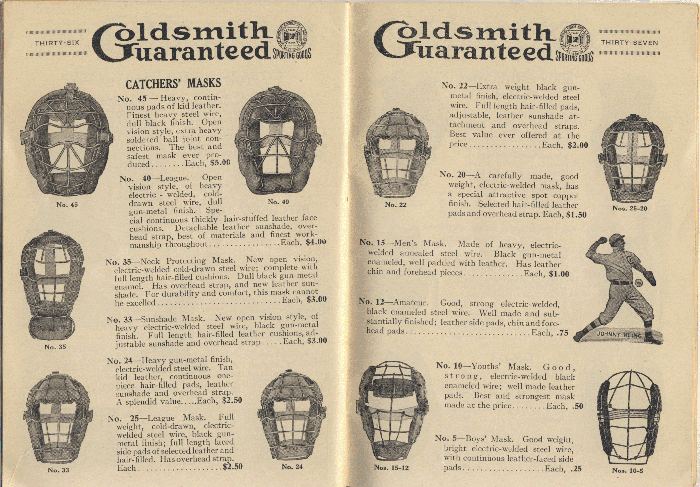
Goldsmith catalog, 1915
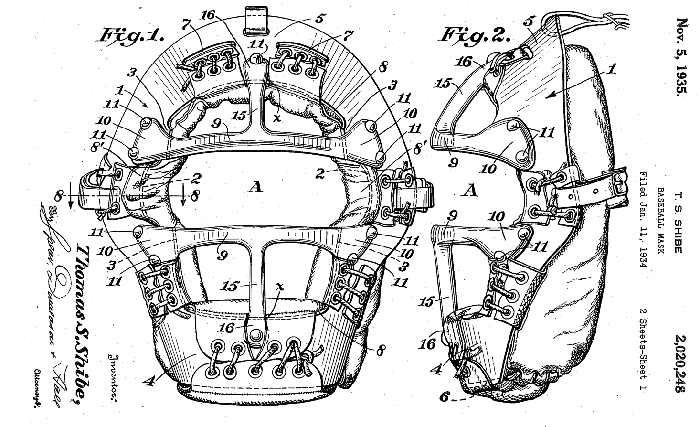

Patent drawing, 1934
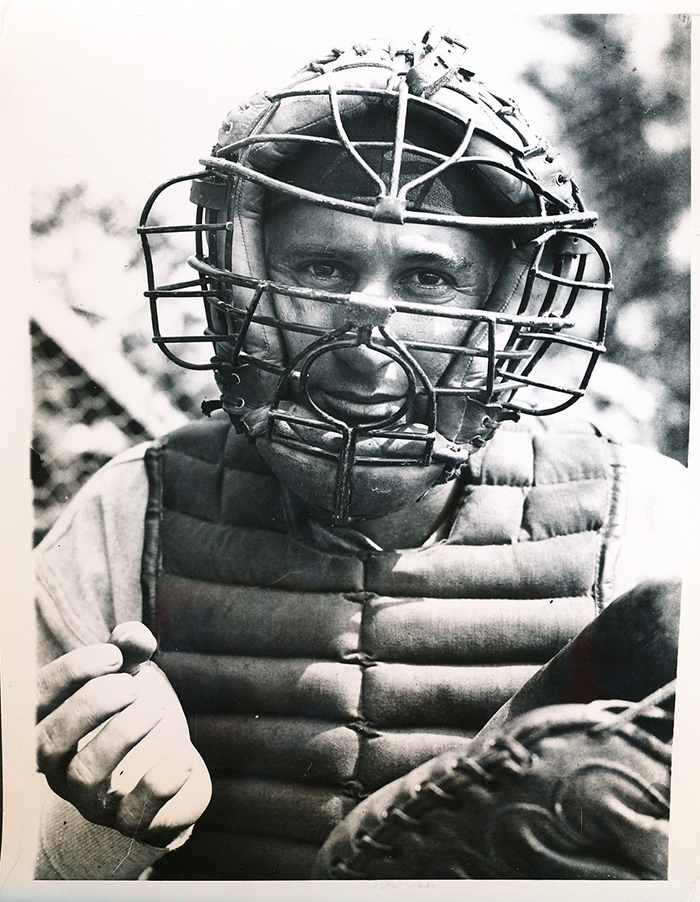
Boston Bee’s catcher Al Lopez in 1936
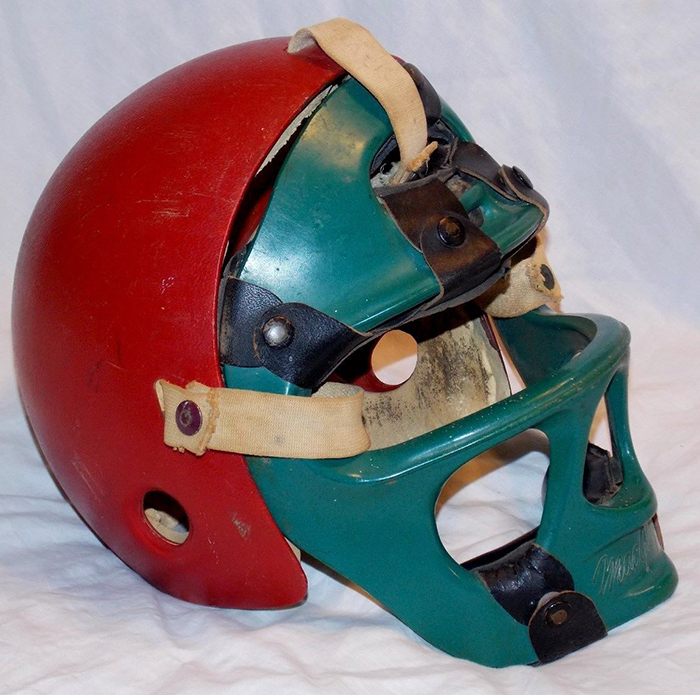
Vintage 1960s hybrid mask/helmet made by MacGregor Sporting Goods
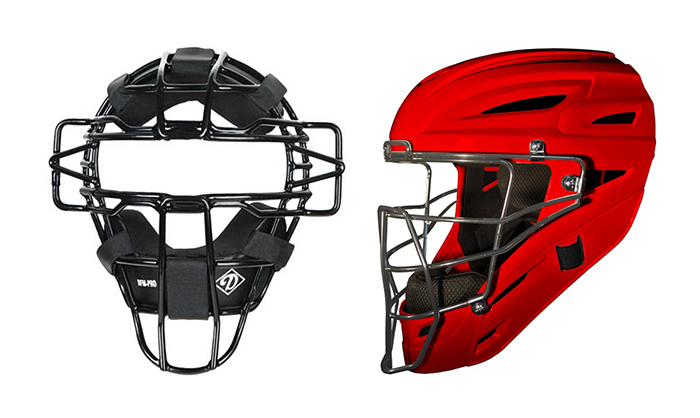
Masks today can retain the old look and are preferred by many catchers, but some like these hockey-style masks provide added safety

A collection of vintage catcher's masks can be relatively inexpensive to collect and makes for a very graphic display | Collection of Lost and Found Art
While some catcher’s masks still retain a look similar to ones from long ago (as the one Erik Kratz of the Kansas City Royals is sporting these days), the newest full head, hockey-style masks some catchers choose to use today are growing in popularity, including with Buster Poesy, of the San Francisco Giants (and if you were wondering who the first MLB player was to wear one of these, it was Charlie O’Brien, in 1997, while he was with the Toronto Blue Jays).

Baseball card featuring Silver Flint

A mask from the 1890s

An 1890s-era elongated cage spiderman catcher's mask

Spiderman mask, 1905 | Image courtesy of American Primitive Gallery, NY

A spitter style mask, 1930s | Image courtesy of American Primitive Gallery, NY

A. J. Reach baseball equipment catalog, 1914

Goldsmith catalog, 1915


Patent drawing, 1934

Boston Bee’s catcher Al Lopez in 1936

Vintage 1960s hybrid mask/helmet made by MacGregor Sporting Goods

Masks today can retain the old look and are preferred by many catchers, but some like these hockey-style masks provide added safety

